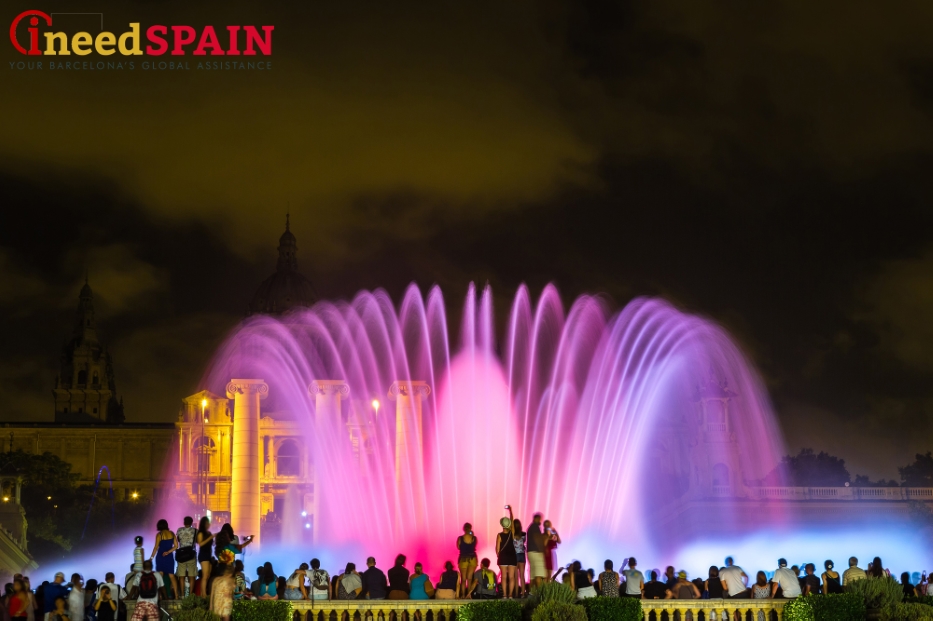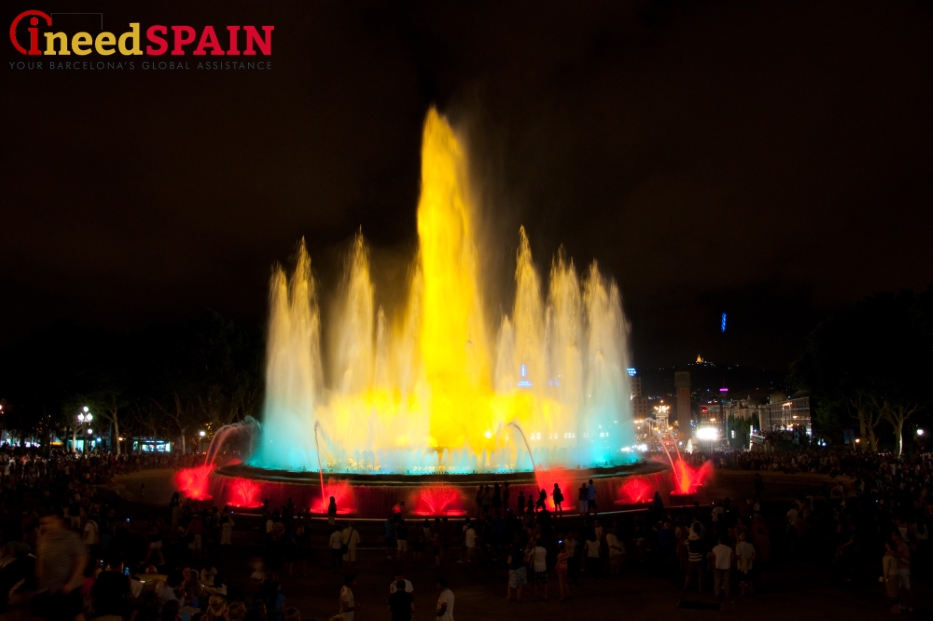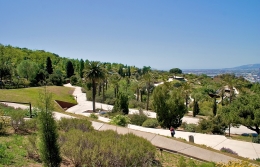
When the work on the exhibition was in process, the organizers decided that they needed a masterpiece - a structure that would stand out among all of the other works. Fortuitously, at that time, Carles Buigas presented his project proposal for an "outstanding, courageous, and expensive work." The designer had built many other backlit fountains in the early 1920s. The place where the fountain was erected was formerly occupied by the architectural site known as the "Four Columns." These columns were built as tributes to the Catalan movement, and they were destroyed in 1928 by Prime Minister Miguel Primo de Rivera. In 2010, the columns were restored just two meters away from their original location.
Buigas had presented his project a year before the exhibition was organized. The plan was very ambitious, and it seemed there was not enough time to create a fountain. However, more than three thousand workers took part in the construction process and built the fountain in a year. The day before the International Exhibition opened, the first fountain show was organized. Barcelona's Montjuïc fountain light show was created to demonstrate innovative achievements using filtered electric light.
The Buigas project marked the commencement of a new kind of art - the art of light. With this fountain, light was no longer used only to illuminate the night, but to embellish it as well. The fountain complements the park perfectly, but in the daytime, it is not as noticeable as at night. At night, the water cascades play in bright colors, and the movements of the water jets are synchronized with music. The musical selection is quite diverse; accordingly, you will hear famous film hits, tunes from Disney movies, traditional Spanish songs, as well as the incredible voices of Freddie Mercury and Montserrat Caballe.
It is not necessary to pay for the Montjuïc fountain show in Barcelona, but during the high season a large number of tourists and local residents gather on the square; therefore, it becomes necessary to find a place to watch in advance. From the high places on the stairs to the building of the National Museum of Catalonia (MNAC), you can see the show while you admire the magnificent view of the whole city.
The fountain is the largest purely decorative structure in the city, and recycled water is used for the show. The fountain provided the first synchronous show of water, light, and music ever presented in the world. Almost three thousand liters of water are pumped through the fountain per second and then into three pools with a high-tech water recycling system. The fountain still remains one of the most popular tourist attractions in the city, with thousands of people visiting every year.
Montjuïc fountain in Barcelona’s operating hours

|
01 January - 06 January |
Thursday, Friday, Saturday |
20:00 – 21:00 |
|
07 January - 28 February |
- |
Closed |
|
01 March - 31 March |
Thursday, Friday, Saturday |
20:00 – 21:00 |
|
01 April - 31 Мay |
Thursday, Friday, Saturday |
21:00 – 22:00 |
|
01 June - 30 September |
Wednesday - Friday |
21:30 – 22:30 |
|
01 October - 31 October |
Thursday, Friday, Saturday |
21:00 – 22:00 |
|
01 November - 31 December |
Thursday, Friday, Saturday |
20:00 – 21:00 |
The fountain and the light show in Barcelona are located in the center of Plaça d'España square, at the foot of the National Museum of Catalonia (MNAC) and overlooking Montjuïc Park. You can get there by metro (station Plaça d'España) or by bus via lines Avinguda Ferrer i Guàrdia / Mèxic: 13, 150 and Plaça Espanya: 23, 37, H12, H16. There are also numerous car parking lots within walking distance.
Specialists from INEEDSpain are here to provide visitors with complete and detailed consultations on life and business in Catalonia as well as all kinds of tourist services. INEEDSpain helps to organize sightseeing tours around the city and creates cultural programmes according to each client’s expectations. INEEDSpain will arrange any necessary documentation and interpreter’s services upon request.





